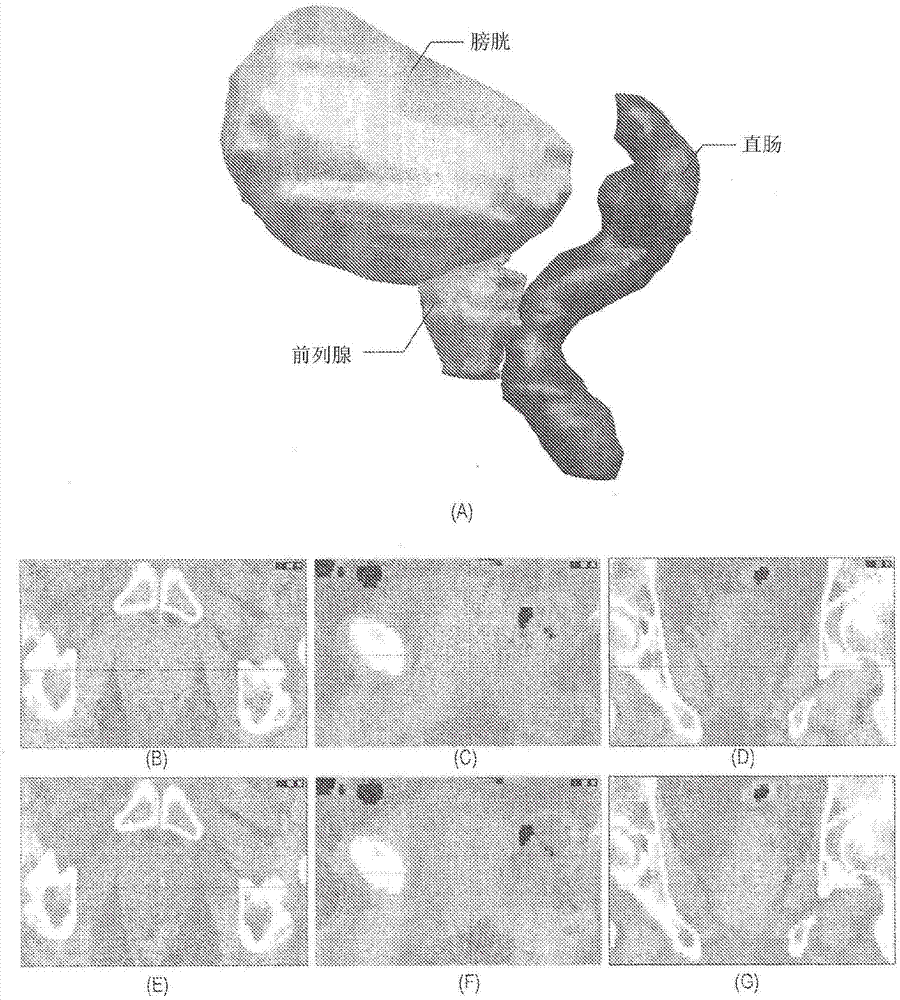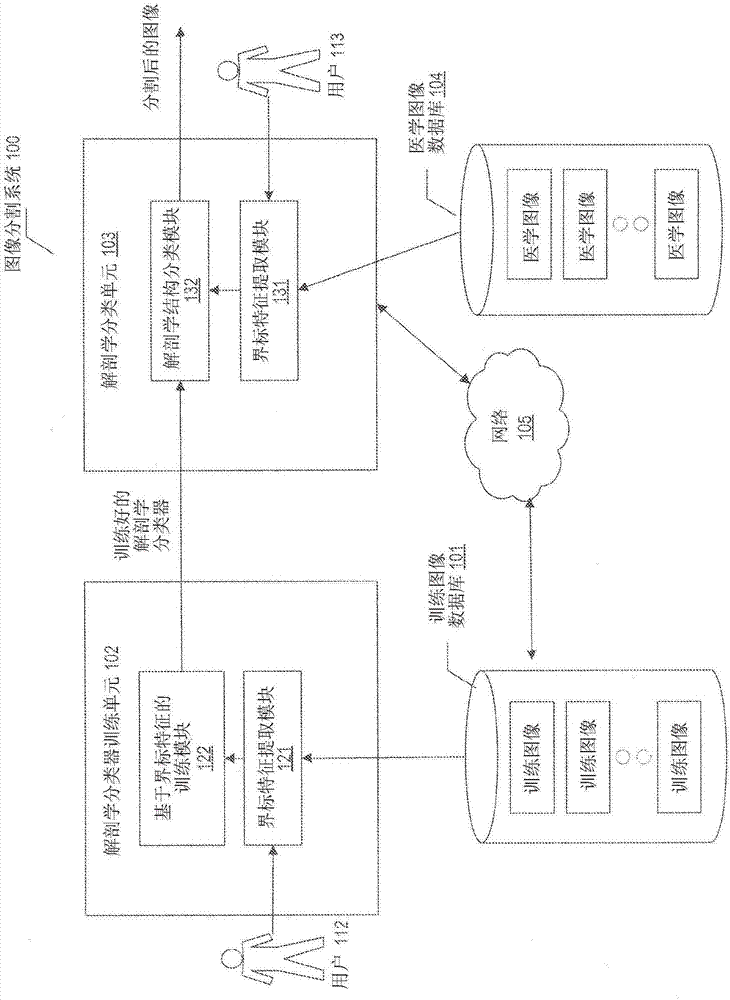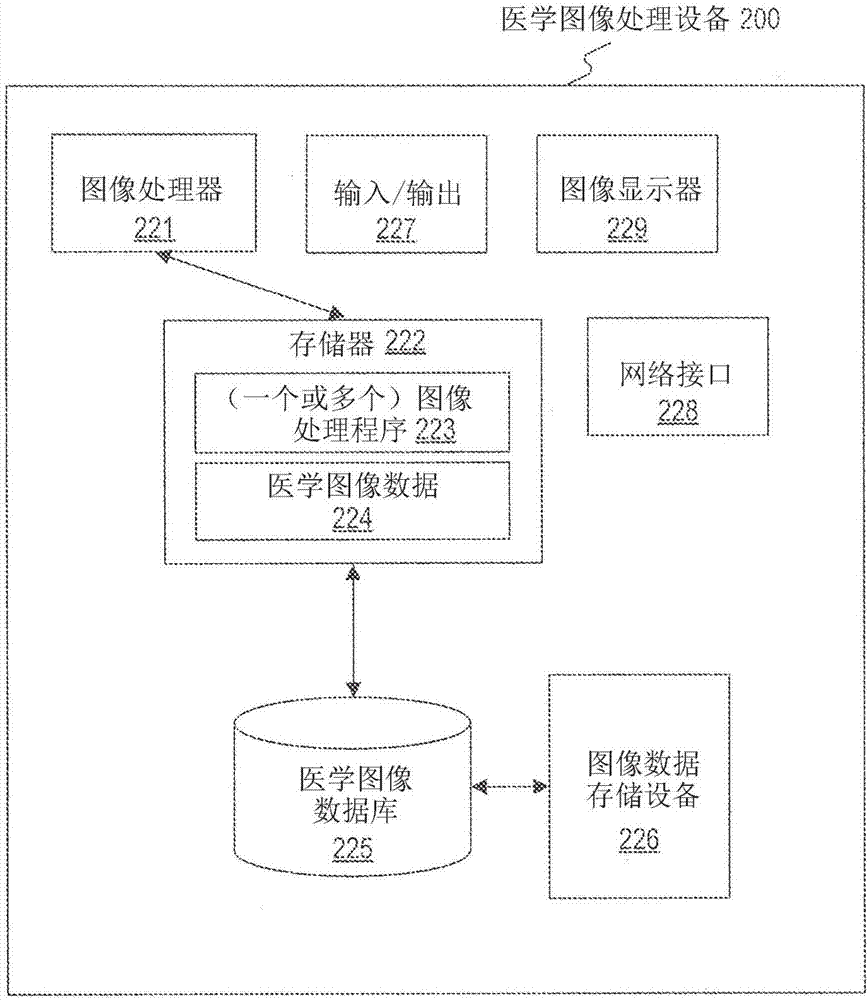Systems and methods for segmenting medical images based on anatomical landmark-based features
A medical image and anatomy technology, applied in image enhancement, image analysis, image data processing, etc., can solve the problem that the 3DCT image is not the most ideal.
- Summary
- Abstract
- Description
- Claims
- Application Information
AI Technical Summary
Problems solved by technology
Method used
Image
Examples
Embodiment Construction
[0026] While examples and features of the disclosed principles are described herein, modifications, adaptations and other implementations are possible without departing from the spirit and scope of the disclosed embodiments. Furthermore, the words "having," "comprising," and "including," and other similar forms, are intended to be equivalent in meaning and are open such that one or more items following any of these words do not refer to the same or more Multiple terms are exhaustive, or means limited to one or more listed terms. And the singular forms "a", "an" and "the" are intended to include the plural forms unless the context clearly dictates otherwise.
[0027]Systems and methods consistent with the present disclosure are directed to segmenting medical images using landmark feature-based learning algorithms. As used herein, "learning algorithm" refers to any algorithm that can learn a model or pattern based on existing information or knowledge. For example, the learning...
PUM
 Login to View More
Login to View More Abstract
Description
Claims
Application Information
 Login to View More
Login to View More - R&D Engineer
- R&D Manager
- IP Professional
- Industry Leading Data Capabilities
- Powerful AI technology
- Patent DNA Extraction
Browse by: Latest US Patents, China's latest patents, Technical Efficacy Thesaurus, Application Domain, Technology Topic, Popular Technical Reports.
© 2024 PatSnap. All rights reserved.Legal|Privacy policy|Modern Slavery Act Transparency Statement|Sitemap|About US| Contact US: help@patsnap.com










